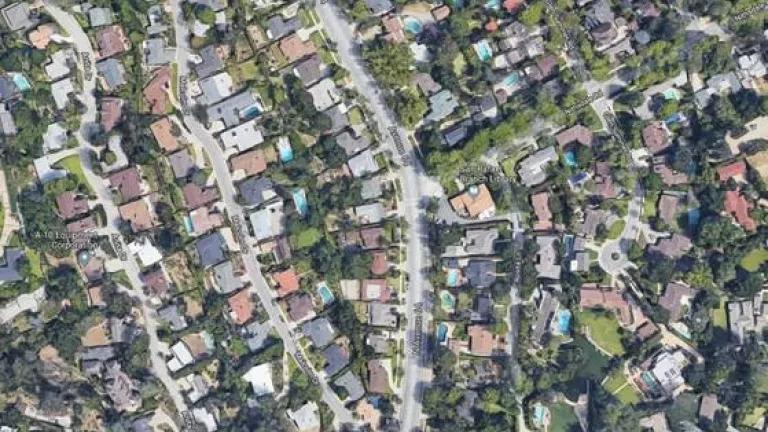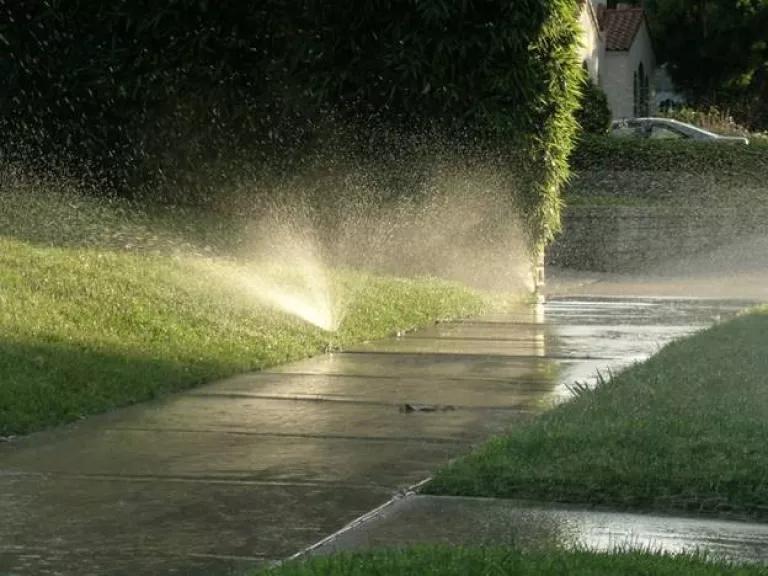
This week, the Natural Resources Defense Council (NRDC) and the City of Pasadena reached a settlement in the lawsuit filed by NRDC last December (as noted here), alleging the City’s continuing failure to comply with state regulations to prevent excessive water use in new residential and commercial landscapes. The litigation—NRDC v. City of Pasadena—and the terms of its settlement have implications for hundreds of cities across the state, due to widespread non-compliance with state regulations governing water use in new landscapes.
As a result of this lawsuit, the City of Pasadena has agreed to take the following actions:
1. Stronger Rules for New Landscapes: The City has adopted the most current version (2015) of the state’s Model Water Efficient Landscape Ordinance (MWELO), which significantly reduces the maximum water use in new landscapes compared with the City’s previous ordinance.
2. Filing Missing Annual Reports: The City has now prepared and filed annual reports on the content and enforcement of its landscape ordinance with the California Department of Water Resources (DWR), as required by DWR regulations, covering the period back to December 2015 when annual reporting was first required.
3. Implementation of Supplemental Water Saving Project: The City has agreed to implement a supplemental water-saving project within Pasadena in addition to any similar projects currently underway, to offset the lack of stringency in the City’s previous ordinance.
4. Compensation for NRDC’s Attorney’s Fees: The City has agreed to pay NRDC’s attorney's fees.
The supplemental water-saving project will be selected and implemented by the City, in consultation with NRDC, and be completed within 28 months.
We welcome the action of City Manager Steve Mermell and the Mayor and Council of Pasadena for their willingness to strike a reasonable settlement of this litigation and take these important steps to improve Pasadena’s efforts to conserve drinking water supplies used in landscape irrigation.
What State Law Requires
In normal water years, roughly half of California’s drinking water is used for irrigation on urban landscapes, a staggering volume of water that is frequently overused and even wasted. It has been the goal of the State since enactment of the Water Conservation in Landscaping Act in 1990 (the Act) that new landscapes and major renovations of existing landscapes should be designed and installed to be water-efficient.
To implement the Act, the State developed a Model Water Efficient Landscape Ordinance (MWELO) in the early 1990’s. The ordinance was later codified in state regulation in 2009. When issuing development permits, each of California’s cities and counties must ensure that new landscapes are designed and installed to be water efficient, in accordance with MWELO or a local landscape ordinance that is at least as effective as MWELO. While the amount of water actually used on a given landscape may vary over time due to the property owner’s habits or methods, MWELO sets criteria for the design and installation of new landscapes so that water-efficient operation is possible, much like the MPG requirements for new automobiles.
In response to Governor Brown’s emergency water conservation Executive Order issued in April 2015, DWR made major revisions to the 2009 version of MWELO. The 2015 MWELO tightened the standards for new landscapes, reducing the maximum allowable water use for new residential landscapes by 20% and for new commercial landscapes by 35%, compared with the 2009 version.

Additionally, under the 2015 MWELO, all local agencies must report on the scope and enforcement of their landscape ordinance on an annual basis. These standardized reports must identify the agency responsible for implementation, and describe any local variations from MWELO, procedures for project review, procedures for compliance verification, enforcement actions, and square footage of landscape reviewed. Analysis of this information will bring local agency enforcement into focus and help spot geographic or programmatic gaps in the effectiveness of MWELO in saving water. Annual reports were first due in January 2016.
MWELO in Pasadena
On average, 60% of Pasadena’s water supply is imported from the Bay-Delta and the Colorado River, resources that are already overextended. Until this litigation spurred action, Pasadena had not updated its landscape ordinance to reflect the new standards in the 2015 MWELO, which it was required to do by December 2015. Nor were any of the required annual reports on landscape permit activity filed with DWR. Nevertheless, the City authorized scores of permits for new buildings and accompanying landscapes. Many of the building permits issued by the City since December 2015 lacked necessary documentation. Still others included higher water allowances than set by 2015 MWELO.
Noncompliance is Widespread
There are 482 incorporated cities and towns in California, each with land use permitting authority, along with 58 counties that issue building permits in unincorporated areas. Under the Act, each of these jurisdictions, regardless of size, must adopt and enforce the 2015 MWELO or a water efficient landscape ordinance that is at least as effective in conserving water as the 2015 MWELO. The responsibility to apply water efficient landscape standards rests with each local permitting authority in California.[1]
In early 2017, NRDC conducted a review of the 2015 reports that were due to be filed in January 2016 (a full year before our review). Out of 482 cities and 58 counties, only 34% of responsible local jurisdictions had filed an MWELO Implementation Report with DWR.
NRDC continued to assess compliance with state regulations by reviewing the content of local landscape ordinances throughout 2017. We found numerous local ordinances that were lacking key water-saving elements of 2015 MWELO. Many of these jurisdictions simply had not updated their outdated ordinances that were based on 2009 MWELO. We followed up by sending Public Records Act requests to DWR and to 11 cities and counties in July 2017. At that point, one jurisdiction—the City of Rancho Cucamonga—took notice after receiving our request and moved quickly to enact 2015 MWELO in October of last year.
In essence, NRDC has been doing what the Department of Water Resources should have been doing all along—reviewing the content of local reports and ordinances, contacting those communities that appeared to be falling short, and taking legal action if necessary to bring non-compliant communities up to date with today’s requirements to curb wasteful and unnecessary use of drinking water for landscape irrigation.
We are unaware of any steps taken by DWR to remedy the current widespread non-compliance with either the reporting requirement or the failure to adopt and enforce the standards in the 2015 MWELO. DWR initially published reporting forms for cities to fill out, but it failed to capture all the elements required by its own regulations, and only belatedly revised these forms when contacted by NRDC. Additionally, DWR’s year-long effort to consider revisions to further strengthen MWELO appears to have run out of gas, notwithstanding hundreds of stakeholder hours preparing for a 2018 version of MWELO. And after 25 years, DWR has failed to provide written guidance on key aspects of MWELO implementation, such as how to determine whether a local ordinance is actually equivalent to MWELO in saving water. Under a new Administration come January, this program certainly deserves a fresh look.
Next Steps
Pasadena is just one of several hundred communities that have failed to submit required reports on its landscape standards and permitting activity to DWR, and many of these communities have failed to adopt 2015 MWELO. At the same time that NRDC brought suit against Pasadena, we filed a nearly identical lawsuit against the city of Murrieta in Riverside County, for a very similar set of infractions. Settlement discussions in that case are currently underway.
In light of the widespread levels of non-compliance with state landscape regulations, and the importance of prudent outdoor water use for maintaining drinking water supplies in urban areas, further litigation is likely. NRDC has compiled stacks of information on communities every bit as out of compliance as Pasadena. Cities and counties throughout the state need to take a close look at their current ordinances and reporting practices and assess their responsibilities under state law.
As a result of the lawsuit settled this week, the City of Pasadena has adopted a strong ordinance that is comparable to 2015 MWELO in conserving water. The effective date of the City’s new ordinance was July 7, 2018. The City also submitted to DWR annual reports required under the 2015 MWELO for calendar years 2015, 2016, and 2017. Furthermore, Pasadena will complete a supplemental water savings project over the next two-plus years—a modest project designed to save at least one-acre foot of water per year (326,000 gallons) for a period of at least ten years following installation. Maybe it shouldn’t have taken the time and expense of a lawsuit by NRDC to achieve this outcome, but it did. And, if that’s what it takes to ensure responsible stewardship of California’s drinking water, we can do it again.
[1] MWELO allows, but does not require, water suppliers to share in the administration of the landscape ordinance, but this is not currently a prevailing practice.

